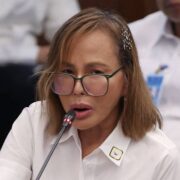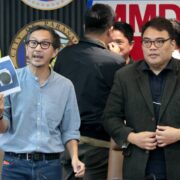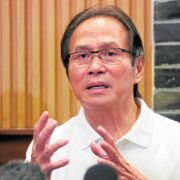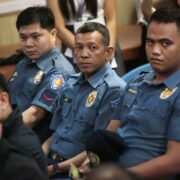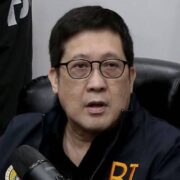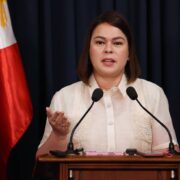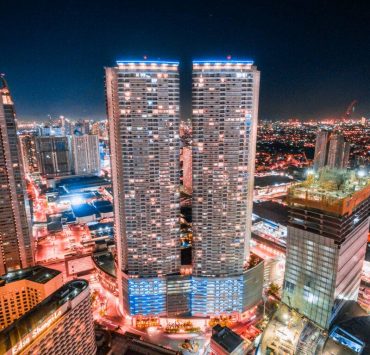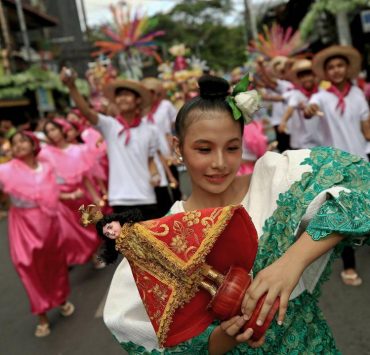Pepe Diokno: ‘GomBurZa’ was a chance for us to make something bigger than ourselves
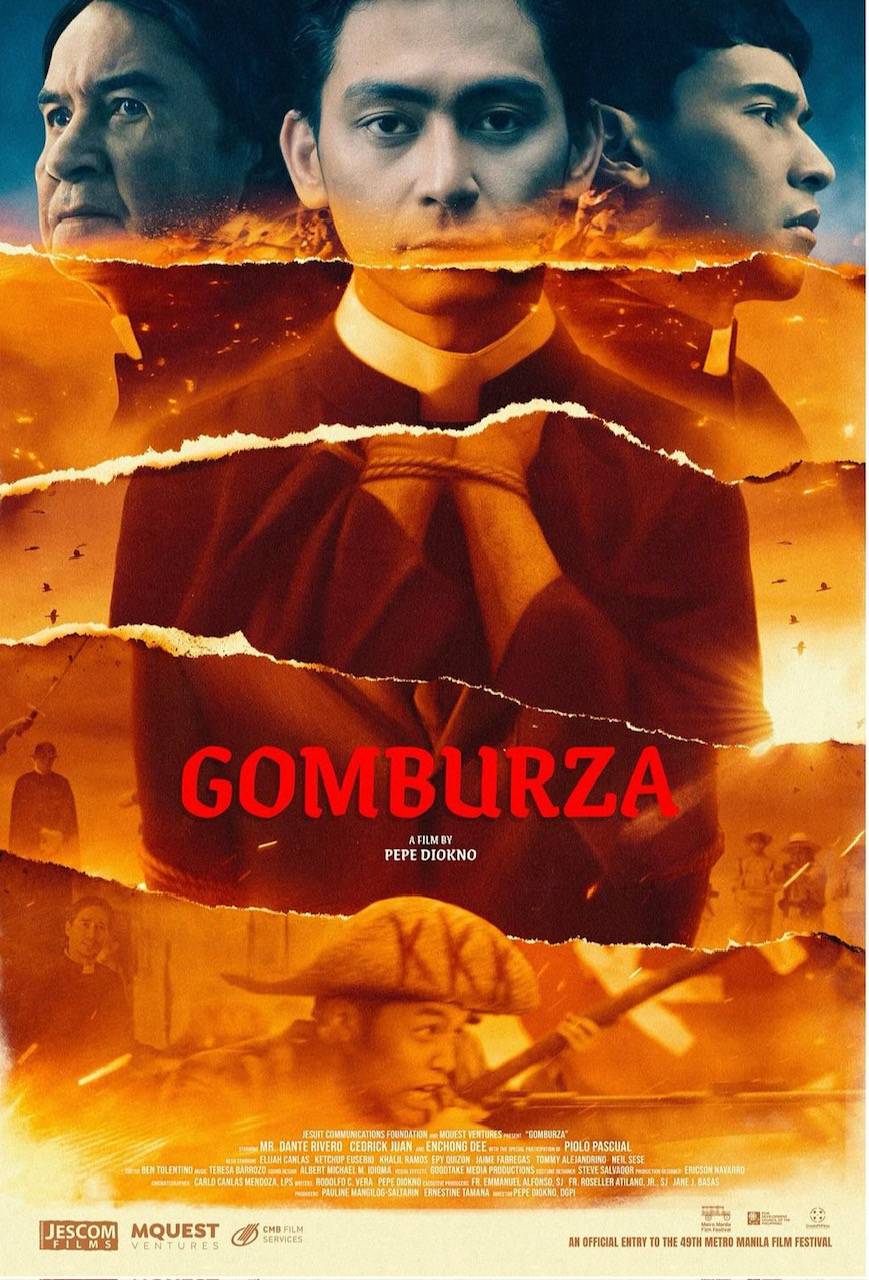
In many ways, when the Metro Manila Film Festival opened on Dec. 25, the odds were stacked against “GomBurZa.”
Would people really be in the mood to watch a historical film about three martyred priests during the holiday season? And even if they were—would there be a cinema near them? “GomBurZa” was being shown in just 39 cinemas.
“I was really anxious the first two days,” shared Pepe Diokno, the film’s director and cowriter.
But “GomBurZa” started winning hearts, transporting people to a dark time in Philippine history, when Spaniards were lording over the country, bringing to life on the big screen people most Filipinos had only read about in textbooks. It awakened something in audiences and, through word of mouth and posts on social media, they started to spread the gospel of “GomBurZa.” “At the start of the festival, we had one of the lowest number of cinemas but then people started responding to the film, and little by little started requesting for the film. We were already hearing that the screenings were sold out, that people were crying at the end of the film, we would also hear reports of people standing up and clapping … We started at 39 cinemas and now we’re at 132,” Diokno said at the screening of “GomBurZa” that eventologist Tim Yap hosted at the Uptown Tempur Cinema in BGC on Jan. 6.
The crowd cheered when Diokno added, “And not just that, the box office is not bad, we’re number three.”
“GomBurZa” is also the festival’s most awarded film, getting seven nods including Best Director for Diokno, Best Actor (Cedrick Juan) Best Cinematography (Carlo Canlas Mendoza), Best Production Design (Ericson Navarro), Best Sound (Melvin Q. Rivera and Louie Boy Bauson) and 2nd Best Picture.
Such a feat for a film that was shot in just 17 days—“17 very, very grueling days,” said Diokno.
“Nakakatuwa lang talaga na ‘yung clamor nung pelikula talaga nanggaling sa mga tao,” Juan said.
“We’re so grateful for the audience response,” Diokno added.
You can look at it this way: the audience is returning the love that the cast and crew poured into the movie. Diokno shared, “Unique din kasi ‘yung nangyari with the film because the pandemic happened. We paused production and as soon as restrictions started to ease, we got the call from JesCom that we were going to continue the film. For many of us, it was like a lifeline after two years of struggle, of not being able to work, two years of losing people very close to us including people on our crew who had died during the pandemic … Getting this call was like a lifeline because it wasn’t just a chance to work again but a chance to do what we love and also a chance to make something bigger than us.”
He added, “I saw everybody from the cast to crew pour their heart and soul into the film and really going above and beyond what was required because we had all been given a lifeline. I think that was special.”
Mendoza said, “The dedication from everyone … we all wanted to be part of this story because we thought it was relevant and as Filipinos it’s very important.”
The festival was supposed to end on Jan. 7—the day after the screening. Diokno said, “I hope we get extended … It’s just so nice to see people back in the cinemas watching Filipino stories. It gave us in the industry so much life.”
The next day, he got what he wished for. The festival had been extended another week. You can still catch “GomBurZa” in cinemas today.
Here’s a fun fact: Diokno’s first job was at this newspaper—he joined Super when he was still in high school and spent years writing for the section. This week, he returns to our pages to share behind-the-scenes moments from “GomBurZa” and answer questions about his beautiful, painful, important film.
Why did you want to work on this film? Why is the story of Gomburza important for you to tell?
The film is a brainchild of JesCom. It was originally meant to premiere in 2021 as a tribute to the 500 years of Christianity in the Philippines (but unfortunately the pandemic happened and the project was put on hold.)
For me, on the other hand, I always wanted to make a historical film because I think it’s important for us to look back. But to be honest, Gomburza was not top of mind. When I was invited to pitch for the project, I even asked myself, “What’s the hullabaloo about three priests who never fought a war?”
But as I did more research, I began to understand why they were so important, and why Rizal and the Katipunan were so inspired by them. It’s because the story of Gomburza is a story of the collective (rather than individual heroism); it’s a story of sacrifice (rather than battle)—and these, I think, are Filipino values that we hold until today. JesCom and I had aligned on this point of view.
How much did you know about them before you started working on the film? Was there something that surprised you about them or about that time in Philippine history that you discovered as you worked on the film?
I had the same awareness as most people, I think—which is, I knew their names and how they were executed. But when I started doing research, I quickly discovered that there was a lot I didn’t know.
The fact that the term “Filipino” began with the Philippine-born priests, for example, was a revelation to me, and that reinforced my perspective that the film should be more about the collective. The story of Zamora was a real shock.
How much research did it take to make this film? How much work went into achieving historical accuracy?
While making the film, we often called ourselves “GomBurZa University” because it was like going back to school, with all the research required. The script, which was primarily written by Rody Vera, was informed by the work of the late Jesuit historian Fr. John Schumacher, SJ, who had written extensively about Fr. Jose Burgos, the secularization movement and the Cavite Mutiny. Rody’s other sources were the works of Fidel Villaroel, Luciano Santiago and Carlos Quirino.
But everyone did research. That’s what we did during the pandemic, while the project was put on hold. Leading the way was our historical consultant, Fr. Rene B. Javellana, SJ of JesCom—who was even on set with us, and so hands-on with our scenes. Our production designer Ericson Navarro poured through countless documents and visual references. (The writings that you see on screen, for example—newspapers, letters, etc.—are archival). Carlo Mendoza studied candlelight for days, just to get the look right. Together, we made a visual bible that was 801 pages long.
The film isn’t perfect, of course. There were some oversights, we had a limited budget and limited shooting days. (The whole film was shot in 17 days.) But we did our best to keep the story and the message intact.
You started working on this project in 2019—how do you feel about it being released years later? Does now feel like the right time?
I tend to agree with Fr. Gomes in the film, that everything happens for a reason, and I’m just grateful for everything that’s happening now. Grateful that we were able to take our time preparing and finishing the film, and grateful to be part of this year’s MMFF, which is really one for the books.
Can you tell us about the film’s journey? What challenges did you face as you worked on it and how did you overcome them?
I mentioned that the project was put on hold. That was the first setback. During the pandemic, many of us lost loved ones and coworkers, and most of us lost our livelihoods. So when restrictions eased and JesCom had made the call to continue the project, it became a lifeline. Not only was this an opportunity to work again, but it was also a chance for us to do what we love and make something bigger than ourselves. I really saw how our cast and crew put their hearts and souls into the film as a result.
What was the atmosphere on the set like? Did you know you were working on such an important movie?
I would often hear that from our cast and crew. There was a sense that we were telling an important story, and that an opportunity like this doesn’t come often.
It’s crazy that you managed to shoot such a beautiful film in just 17 days—what was that like?
It was a whirlwind. But I really believed that preparation is the bulk of the job. We did a complete tech scout—which means that we visited every single location at least three times before we started rolling. We planned out all the camera angles beforehand. The lighting and production design departments set up in advance. The actors rehearsed their butts off. When it was time to shoot, everyone came so prepared that all we had to do was press record.
Tell us about the casting choices. How do you feel about their performances? What was it like to work with them?
I am so proud of everyone’s performance. As I mentioned, they all put in the work—not only did they learn Spanish and Latin, but they also did their own research. I learned a lot about Burgos from Cedrick Juan, for example. His script was full of notes, and we had so many discussions about who Burgos was as a person. Enchong Dee did psychological work, to craft a silent descent into madness for Zamora. It had to to feel right; despite having less lines—and Enchong really did it with so much care and grace.
Working with Dante Rivero, on the other hand, is a real privilege, with his discipline, generosity and humility. You know, at 77 years old, he still drives himself to work every day. In between set-ups, he insists on waiting by the camera instead of going back to the tent, so I will always treasure the moments I spent talking to him then. And the way he performs—how he delivers his lines and moves his body—everything is just so well thought out but also so organic.
But going beyond the priests, the film is an ensemble piece. Every character is important even if they don’t have a lot of speaking lines (or any lines at all). It took months, but our casting director Danna Simbre did an amazing job putting together the cast. We had Piolo Pascual, Jaime Fabregas, Ronnie Lazaro, Nanding Josef, Leo Rialp, Joel Saracho, Carlos Siguion-Reyna, Ketchup Eusebio, Epi Quizon, Paolo O’ Hara, Elijah Canlas, Tommy Alejandrino, Arnold Reyes, Sheely Gener, Sue Prado, Khalil Ramos, Neil Sese, Brian Sy, DMs Boongaling—I could go on and on. We had such an abundance of acting talent. My job as a director was really just to give them the space to practice their craft.
The film has gotten so much praise, so much love, has received so many awards—did you expect it? How do you feel about it? People have said such beautiful things about the film—can you recall some favorites?
I did not expect it, honestly. When it was announced that we had the least number of cinemas, I was prepared for the worst. But on the first and second day of the festival, we were hearing reports of sold-out screenings, and of people really emotionally responding to the film, crying, some even standing and clapping—and that, for me, has been the best reward.
Tell us about the unsung heroes of “GomBurZa”—the ones who worked behind the scenes and made the film what it is.
There are so many. I always tell our cast and crew that we are all parents of the film, because it’s a product of our collective efforts. But I want to take this opportunity to acknowledge my directing team. My first assistant director Bea Fabros, who did all the breakdowns to manage the 17-day shoot, and who ran the set with such precision and care; acting coach Bombi Plata, who did the important rehearsal work with our cast, and could get to the heart of a scene with a look or a touch on the shoulder, when words failed me; script continuity Regine Santos, who knew every shot by heart and was so attentive to details that she still sees things I don’t; crowd Director Jeffrey Catnuba, who would amaze me with how he brought scenes to life, it’s like he paints with people; and Roven Alejandro, our Spanish and Latin coach on-set who worked so closely with our actors to get not just the language right, but also the diction and emotion.
What’s next for Gomburza? Is it headed to other festivals?
The film will be part of the Manila International Film Festival in LA later this month, and hopefully we will have more screenings for Filipinos abroad. But I particularly look forward to bringing the film around the Philippines. Hopefully we get to do more school screenings and talkbacks. If any school or organization (even businesses) would like to host, they can email gomburzamarketing@jescom.ph.
What’s next for you as director?
Right now, I’m just enjoying the process of bringing Gomburza around. I do have film concepts in development. I went back to school last year, at the Torino Script Lab in Italy, and there are many things I learned there that I can’t wait to apply in my writing. But I want to take my time. I have so much respect for our audience, and I just want to give them well-developed stories and well-made films.



